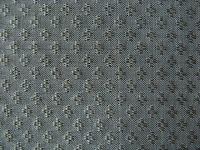“Fair trade” is one of the principles of TAMMACHAT. Sometimes our customers ask us what that means; sometimes we ask ourselves whether we are actually able to practice it, given the many production stages involved in creating textiles.
Each piece of cloth (or finished textile product) involves many participants and processes, which add value at each step, to the initial raw commodity – fibre. Adding value and allowing people to earn income in their own communities are major goals of community development. At the same time, those additional steps make it difficult to employ the cooperative model common to agricultural commodities, such as coffee or sugar.
These issues were illustrated this week and last when we spent 8 days with villagers working with the Pattanarak Foundation, a non-governmental organization that works with disadvantaged populations in the rural border areas of Thailand.
Pattanarak has established numerous cotton production groups along the Thai-Lao border to help women set up a sustainable source of income in their “Alternative Livelihoods" program. With social networks and skills developed through these groups, as well as the income they make through the program, many women have gone on to participate in other community development programs, such as group savings and loans schemes.
To learn about Pattanarak first hand, and to see whether we would consider products purchased from them “fairly traded,” we signed up for a study tour with Pattanarak. We were based in Khong Chiam, home to the Nam Song Sii (i.e., Two-Colour Water), where the mighty Mekong meets the Moon River. We learned more about how villagers grow cotton without chemicals along the banks of the Mekong and how they transform them into extraordinary cloth – entirely by hand. And we were able to spend time with a number of the women involved with the program.
As we said throughout our time with Pattanarak, we were having “fun with language” too, each day building our Thai language skills with Aew, our capable and skilled development guide, who used our time together to grow her own English vocabulary and comfort speaking. Our 2 dictionaries were well-thumbed and our textile-related Thai (and Aew's English) vocabulary grew by leaps and bounds.
Ellen will post a photo essay to illustrate the entire production process – from growing the cotton organically along the banks of the Mekong to the finished fibre product, whether a bag, shirt, tablecloth or stuffed elephant!
And I will post another entry about TAMMACHAT, Pattanarak and fair trade that I hope will shed more light on what we're learning about what fair trade really means at a village level.
Happy reading!
Pii Plaa (aka Alleson)







